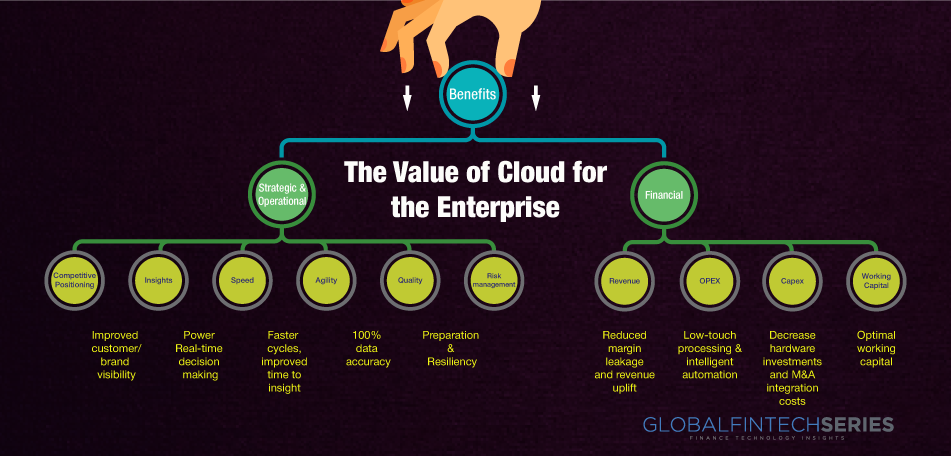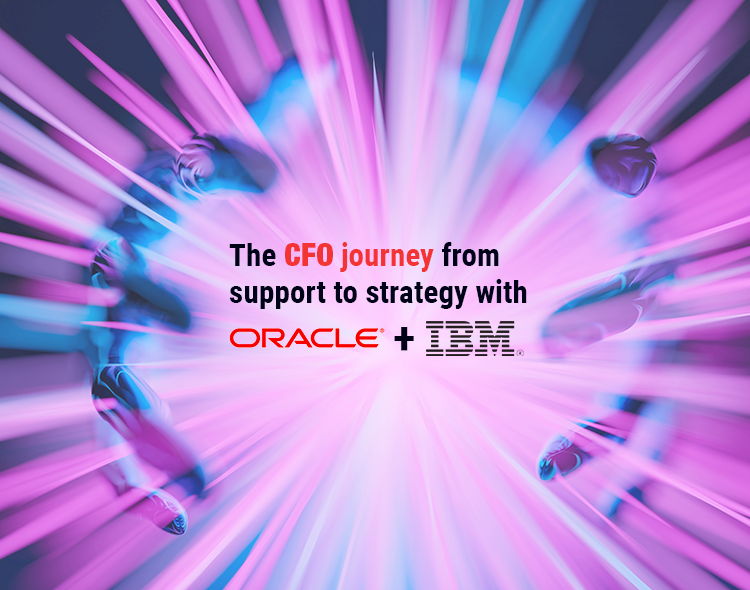In recent years, the amount of time the CFO spends outside of the fundamental functions of finance and accounting has increased dramatically. The secret is having the appropriate technology. Without the data to support you, it is impossible to make quick judgments on where and how to devote resources in a crisis. According to the Hackett Report, developing internal analytics competencies is at the top of the strategies that can improve finance’s analytics capabilities, followed by providing self-service analytics tools, expanding the use of data visualization tools, increasing training and resources for both internal and external analytic teams, and so on. This is why advanced analytics and information management is the single best investment that companies can make right now.

What CFO’s receive From Oracle?
An autonomous technology experience can be benefited by the appropriate Oracle Cloud strategy. We can categorize the offerings by Oracle Corp. as Oracle E-Business Suite which is an integrated version of business apps to automate supply chain management (SCM), enterprise resource planning (ERP), and customer relationship management (CRM) proceedings in-house. It is also referred to as Oracle EBS.
- Fintech platform: Natively digital cloud software with a built-in web service library that offers additional capabilities and is available from anywhere on the Internet.
- Oracle has integrated, maintained, safeguarded, and upgraded a best-in-class set of capabilities.To facilitate uptake, ongoing innovation is given as quarterly feature upgrades.
- Getting the books right: Financial transaction processing, accounting, closing, consolidation, and reporting tools that are powerful.
- Dashboards based on personas to monitor performance and direct users’ everyday activities.
- Using collaborative tools, optical character recognition, and recommendation engines, quick low-touch processing is possible.
- Forecasting performance with a complete set of financial analysis and planning tools, with integrated data management.
- Real-time analytics to assess patterns, modify models, and improve forecasts for sales and profits.
- With cutting-edge visualization techniques, complex information can be shown, changed, interpreted, and communicated.
- Making smart decisions: With a “single source of truth,” interactive, personalized reports can delve down across layers of multidimensional data.
- Better decision support utilizing cognitive insights and predictive algorithms.
- Natural language-speaking digital assistants that can answer faqs: Even for their most delicate workloads, IBM Cloud for Financial Services is built to assist clients in reducing risk and accelerating cloud adoption.
IBM Financial Transaction Manager: What is it?
The program IBM Financial Transaction Manager organizes, plans, and oversees financial transactions. Financial organizations are able to consolidate their payment operations onto a single platform since it provides uniform processing across various payment forms. The program IBM Financial Transaction Manager organizes, plans, and oversees financial transactions. Financial organizations are able to consolidate their payment operations onto a single platform since it provides uniform processing across various payment forms. Red Hat® OpenShift® powers deployment, which is available in the public cloud, hybrid cloud, and multi-cloud.
Latest Read: A Closer Look At Integrated Document Management And Accounts Payable Software
What CFO’s receive From IBM?
- Constructed capabilities
Utilize complimentary solutions for SWIFT, ACH, SEPA, check processing, customer onboarding, transaction ingestion, and other services such as rapid payments. Check processing is renovated, replaced, and renewed by optional check services.
- Flexible illustration
Support numerous business units on a single instance, allowing each to tailor the solution to its unique requirements while saving money and simplifying compliance tasks. Obtain APIs for anti-fraud and sanction detection integration.
- Function-rich interface
Benefit from a SWIFT messaging interface that is certified for all SWIFT interfaces and supports all SWIFT MT and MX messages. Without any changes to the back office, payments move through different payment networks.
- Support for Red Hat OpenShift
Use Red Hat OpenShift’s flexible deployment options and the freedom to select from a list of supported cloud service providers. Red Hat OpenShift platform validation and Kubernetes standards are used to create certified containers.
- A solitary, expandable platform
Consolidate payment processing, standardize procedures, and make use of current resources. Capabilities for common integration aid in transaction management. Enterprise data management solutions can be integrated with an operational database.
- Controlling operational risk
Enable risk control across several channels while keeping an eye on the payment transaction. Take Dodd-Frank and AML into account, and use industry standards to help with compliance.
- Reduce time-to-market
Mix a build-your-own strategy with prebuilt capabilities. Through projects that add value at each level, you may develop differentiated goods and realize a strategic vision.
Latest Read: 10 Of The Best Stock Market Podcasts
